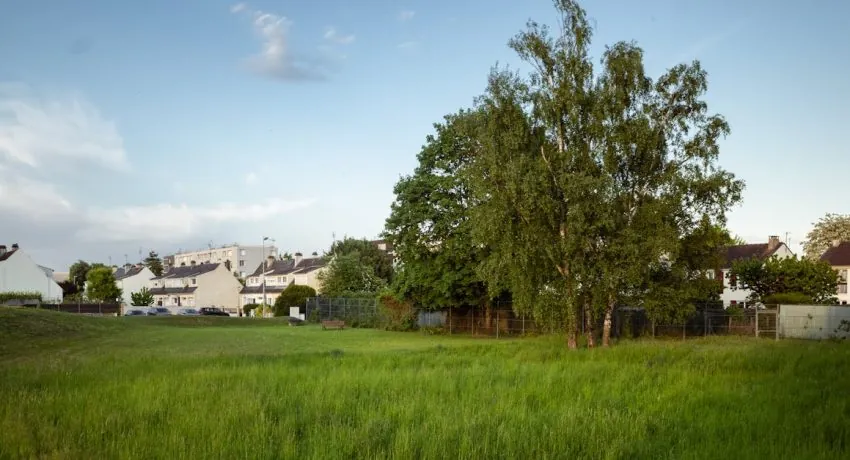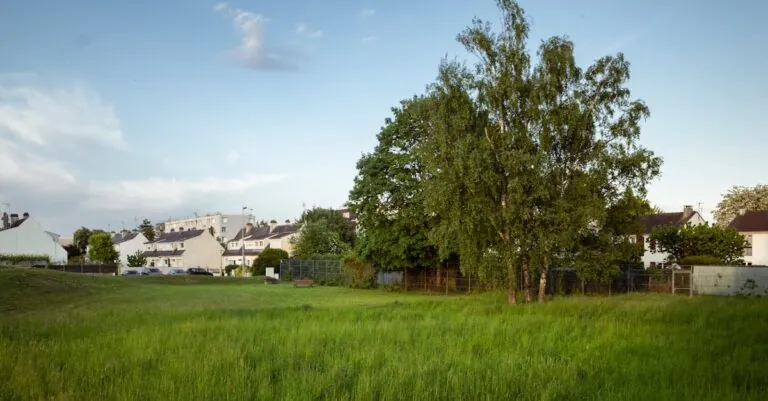In a world where commuting can feel like a never-ending episode of a bad sitcom, transit-oriented housing swoops in like a superhero. Imagine living just a hop, skip, and a jump away from your daily train or bus. No more frantic mornings spent searching for your keys or cursing at traffic. Instead, it’s all about convenience and accessibility, making life a whole lot easier—and let’s face it, who doesn’t want that?
Table of Contents
ToggleOverview of Transit-Oriented Housing
Transit-oriented housing focuses on creating residential spaces near public transportation hubs. This approach encourages a car-free lifestyle, reducing reliance on personal vehicles. Residents enjoy increased accessibility to urban amenities, including shops, parks, and workplaces. Proximity to transit options fosters a sense of community, as people engage more with their neighbors.
Effective transit systems enhance the appeal of these housing developments. Commuters benefit from shorter travel times and reduced transportation costs. Integrating transit-oriented housing into urban planning can promote sustainable environmental practices. For example, studies indicate that people living in transit-oriented areas produce 45% less carbon emissions compared to those in car-dependent neighborhoods.
High-density housing supports diverse demographics, including families, young professionals, and seniors. Varied housing options exist, ranging from apartments to townhomes. Developers recognize the demand for quality living spaces that prioritize public transit access.
Cities across the United States increasingly adopt transit-oriented housing policies. Initiatives support the construction of mixed-use developments that blend residential, commercial, and recreational spaces. Successful examples include Arlington, Virginia, and Portland, Oregon, where planning efforts transformed public transit stations into vibrant community hubs.
Investments in transit infrastructure and equitably priced housing have lasting impacts on neighborhood vitality. Overall, transit-oriented housing provides practical solutions for urban dwellers, emphasizing convenience, access, and sustainable living.
Benefits of Transit-Oriented Housing
Transit-oriented housing offers numerous advantages that enhance urban living and community dynamics.
Environmental Impact
Transit-oriented housing significantly reduces reliance on personal vehicles. This shift leads to a 45% decrease in carbon emissions among residents compared to those in car-dependent neighborhoods. Proximity to public transportation encourages walking and cycling, promoting healthier lifestyles. Green spaces often accompany these developments, contributing to better air quality. Sustainable living practices become more common, enabling communities to thrive while lowering their environmental footprint.
Economic Advantages
Economic benefits accompany transit-oriented housing developments. Residents typically experience lower transportation costs due to easy access to public transit. Communities with transit-oriented designs often witness increased property values. Local businesses thrive as foot traffic rises, leading to job creation. Furthermore, these areas attract diverse demographics, which fosters economic vitality and innovation within the community.
Design Principles of Transit-Oriented Housing
Transit-oriented housing emphasizes specific design principles that enhance urban living. Mixed-use developments play a critical role in this concept, integrating residential units with commercial and recreational spaces. They encourage people to live, work, shop, and play in close proximity, boosting local economies. Examples of successful mixed-use developments include the Station Square in Pittsburgh, which combines residential living with dining and retail options.
Accessibility and walkability are key design elements of transit-oriented housing. Public transportation options must be within walking distance, reducing the need for personal vehicles. Streets designed for pedestrians ensure safety and comfort, promoting walking and cycling. Building sidewalks, bike lanes, and crosswalks can significantly improve accessibility. Research indicates that walkable communities foster healthier lifestyles, as residents engage more in physical activities. Additionally, easy access to amenities creates a vibrant atmosphere that attracts diverse populations.
Challenges in Implementing Transit-Oriented Housing
Transit-oriented housing faces several challenges that can hinder its effectiveness within urban environments.
Zoning and Regulatory Issues
Zoning laws often limit the density and height of buildings near transit stations. These regulations restrict developers from maximizing the potential of transit-oriented projects. Additionally, variances can be time-consuming and costly to obtain, discouraging investment. Complex approval processes may delay or outright block desired developments. Rules governing land use often conflict with the principles of mixed-use housing, complicating efforts to integrate residential, commercial, and recreational spaces. Communities may lack updated zoning codes that reflect contemporary housing needs, which inhibits transit-oriented development.
Community Resistance
Community opposition frequently arises against transit-oriented housing projects. Concerns about increased traffic and noise levels contribute to these objections. Resident fears about changes to neighborhood character and property values can fuel resistance. Misunderstandings regarding the benefits of transit-oriented living may lead to negative perceptions among locals. Community outreach and engagement strategies are crucial to address these concerns and foster acceptance. Educating residents on the advantages of such housing can help overcome resistance and promote a supportive environment for diverse living solutions.
Case Studies of Successful Transit-Oriented Housing
Arlington, Virginia, exemplifies transit-oriented housing with its transformation around the Crystal City Metro station. This area now features mixed-use developments, integrating residential, commercial, and recreational spaces. Residents enjoy easy access to public transit while benefiting from local shops and parks, enhancing community engagement.
Portland, Oregon, represents another successful case through its focus on sustainability and accessibility. Developments near the MAX light rail have created vibrant neighborhoods where people walk and bike rather than rely on cars. Increased foot traffic stimulates local businesses, fostering economic growth within the community.
Chicago’s transit-oriented developments highlight incredible diversity and innovation. Neighborhoods like the Near South Side utilize proximity to the CTA Red Line, revamping underutilized land into thriving residential complexes. These spaces support a mix of demographics and create a lively urban atmosphere.
Seattle’s Urban Village strategy reflects successful planning focused on transit options. By concentrating residential units near light rail stations, the city promotes higher density housing while easing congestion. Local amenities, like grocery stores and cafes, enhance residents’ quality of life.
In Los Angeles, the expo line connects transit-oriented developments successfully across multiple neighborhoods. These areas prioritize walkability, attracting a variety of residents seeking low-carbon lifestyles. Enhanced public transport options encourage people to rely less on vehicles, contributing to reduced traffic congestion.
These case studies illustrate the benefits of transit-oriented housing. Areas designed with consideration for public transport not only improve residents’ daily lives but also stimulate local economies while promoting sustainable practices.
Conclusion
Transit-oriented housing stands as a transformative approach to urban living. By prioritizing accessibility and sustainability, it reshapes how communities interact with their environment. The integration of residential spaces with public transportation not only enhances convenience but also fosters vibrant neighborhoods.
As cities continue to embrace this model, the benefits become increasingly clear. Residents enjoy reduced commuting stress, lower transportation costs, and improved air quality. With successful examples across the U.S., the movement toward transit-oriented housing promises a brighter, more sustainable future for urban dwellers. Embracing this shift can lead to healthier lifestyles and thriving local economies, making it a compelling solution for modern urban challenges.




